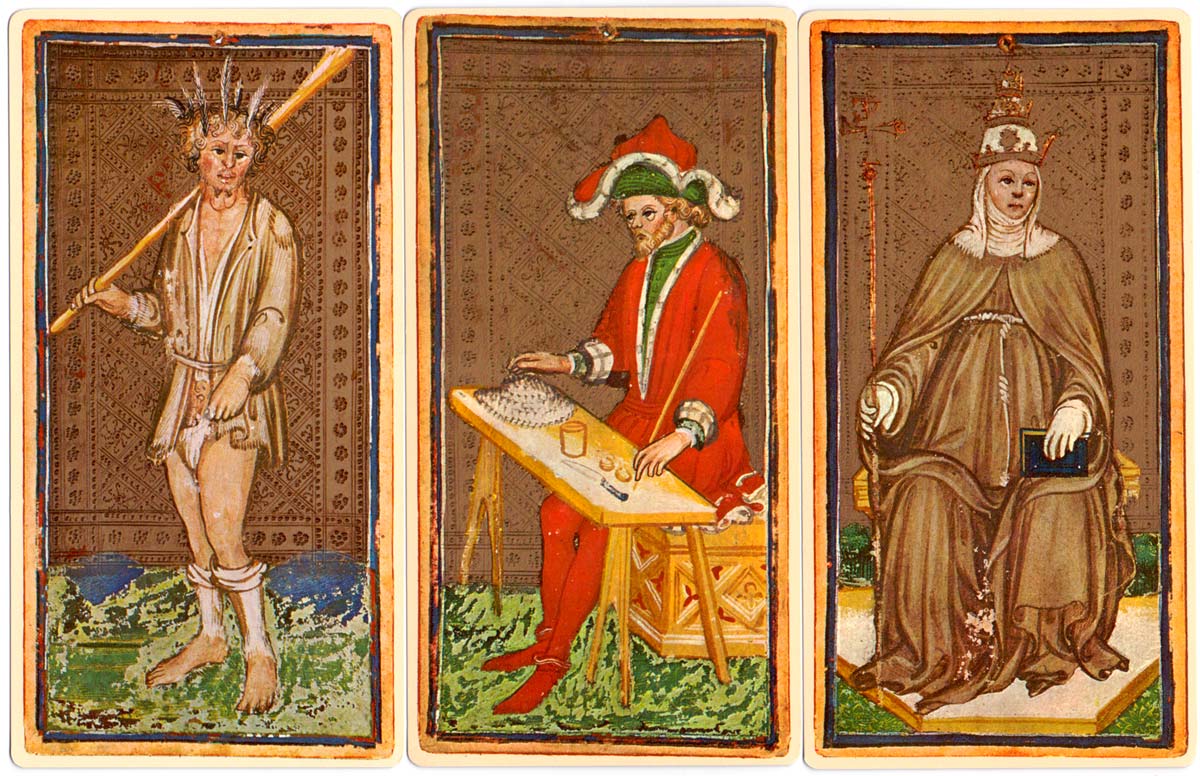- Total £0.00
The History of Tarot Cards - Tarot Card Reading
Tarot is an ancient practice, but what is the real history of Tarot? From divination and self-discovery, the tarot deck has been used for many years. In this article, we explore the origins of tarot cards, the evolution of Tarot and the symbolism behind the hanged man card, as well as some tips for beginners on reading tarot spreads.
The Origins of Tarot
The exact origins of Tarot remain somewhat of a mystery, it is generally believed that the cards were first used in Italy around 1460. The oldest known surviving Tarot deck, the Visconti-Sforza Tarot, was created in the mid-15th century for the Duke of Milan. This deck featured 78 cards, including the familiar suits of Swords, Cups, Wands, and Pentacles.

The history of Tarot is steeped in mystery, and there are many different theories about its origins. Some believe that the Tarot deck may have originated in ancient Egypt or Atlantis, while others dispute these claims due to the lack of concrete evidence. Despite the debate over its origin, the Tarot deck undoubtedly draws from various mythologies and symbolism, such as the Tree of Life from the Kabbalah and the gods and goddesses of Greek mythology.
The Evolution of Tarot
Across the ages, Tarot has evolved in many ways and been subject to several adaptations. In the 18th century, French occultist Jean-Baptiste Alliette, otherwise called Etteilla, introduced the first Tarot book and crafted a novel Tarot deck with Egyptian elements. The 19th century saw French mystic Eliphas Levi spread the popularity of Tarot as a means for spiritual growth and divination.

The 20th century saw the ascent of the Rider-Waite Tarot deck, hailed as the most sought-after Tarot deck among English-speaking masses. Conceived by British occultist Arthur Edward Waite in collaboration with the ingenious artist Pamela Colman Smith, the Rider-Waite deck's imagery proved to be more accessible, comprehensible and open to interpretation than previous Tarot decks.
In the contemporary times, the market for Tarot decks is saturated with an array of choices, each offering a distinctive array of symbols, themes, and meanings. Alongside this, the domain of Tarot has widened its horizons with the advent of online resources and communities, which proffer free readings and assistance for those who are just beginning to explore this fascinating art.
The Significance of Tarot
Tarot is an instrument for self-discovery, prophecy, and spiritual advancement. Many people emply Tarot as a means to acquire an understanding of their existence, bonds, and individual obstacles. Others use Tarot as a channel to interconnect with the celestial or unravel the enigmas of the cosmos.
Irrespective of your convictions or incentives, Tarot presents an absorbing peek into the human mind and the realm of symbolism and folklore. Whether you are an experienced Tarot reader or a neophyte intrigued by this art, the history of Tarot is a fertile and captivating terrain that is deserving of exploration.
The Symbolism of the Hanged Man Card

Amongst the most symbolic tarot cards is the Hanged Man, which portrays a figure suspended upside-down by one foot, with arms folded behind their back. Despite the initial impression of the Hanged Man as a frightening or foreboding card, it exudes a profound connotation that is linked to the act of relinquishing control, sacrifice, and emancipation through surrender.
The Hanged Man stimulates us to view situations from an unconventional angle and detach ourselves from our worldly possessions and aspirations. It's a reminder that often the most significant progression stems from instances of surrender and sacrifice. As we cast off the shackles of our desire for domination and permit ourselves to be exposed, we unveil unexplored prospects and chances for advancement.
Reading Tarot Spreads for Beginners

If you're a beginner to tarot, the intricate world of tarot spreads and card interpretations may seem overwhelming at first. But don't worry, with a little bit of practice and direction, anyone can master the art of reading tarot spreads.
A tarot spread is a layout of cards that can help you gain insight into a particular situation or question. There are many different types of tarot spreads, ranging from simple 3 card spreads to more complex 10 card spreads. Some popular tarot spreads for beginners include the past-present-future spread, the yes/no spread, and the Celtic cross spread.
When reading tarot spreads, it's important to approach the cards with an open mind and a willingness to learn. Take time to study each card and its position within the spread, and allow your intuition to guide you as you interpret the cards' meanings.
The Rich History of Tarot
Despite its popularity and widespread use, Tarot is still misunderstood by many people. Some view it as a form of black magic or superstition, while others dismiss it as a parlor trick. But Tarot is a complex and multifaceted practice that resists easy categorisation.
Whether a skeptic or a believer, there is no denying the increasing appeal of Tarot. The rich history, intricate symbolism, and universal themes continue to fascinate and inspire many people from all different backgrounds. Why not pick up a Tarot deck and see what secrets it holds for you? Or you could study Tarot with our Ancient Keys to Tarot Collection
You may be surprised at what you discover.

